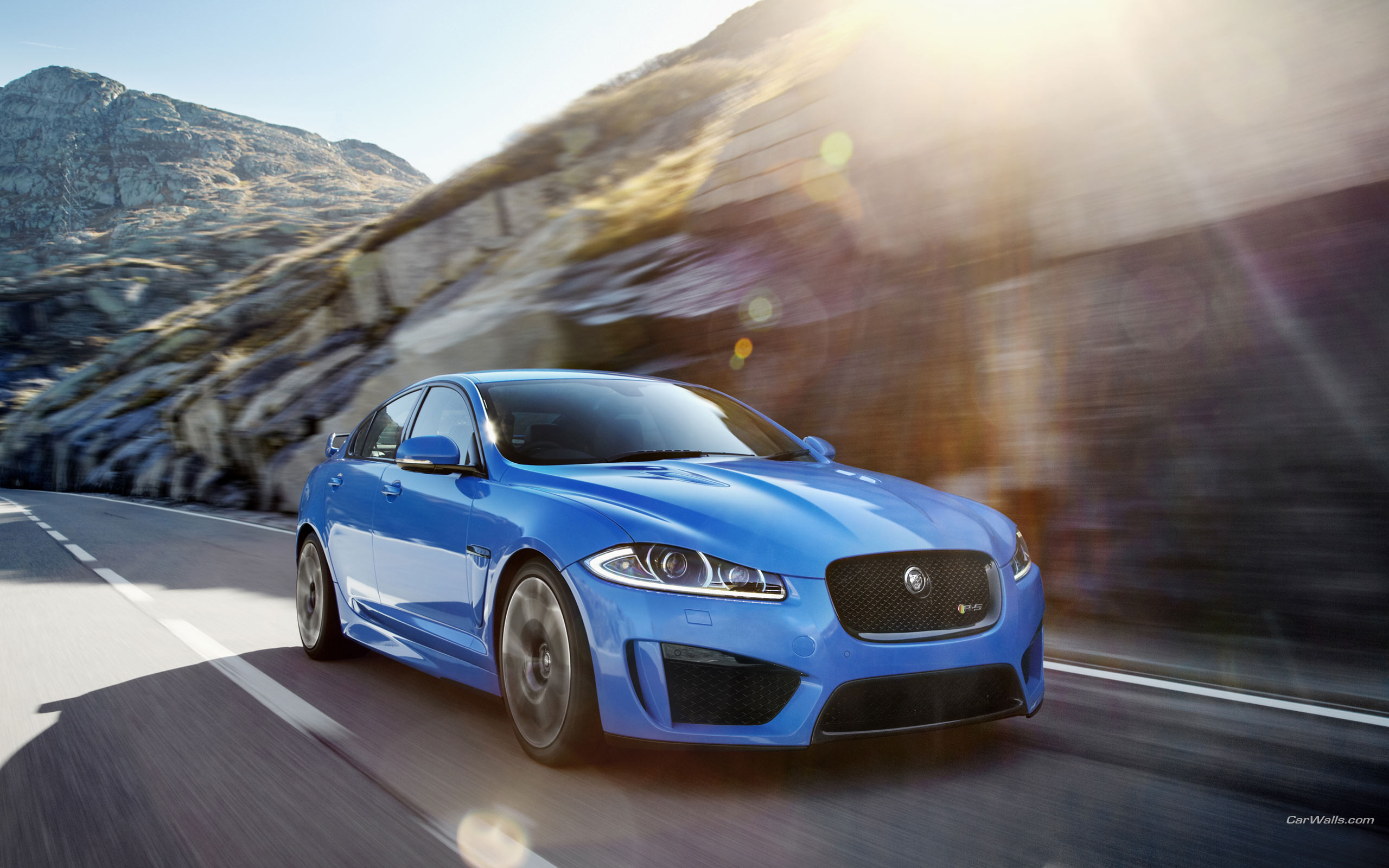The Jaguar XF is an executive saloon designed to compete with the BMW 5-series, Mercedes E-class and Audi A6. It’s a crucial car for Jaguar, too; the original version of 2007 was responsible for injecting much needed appeal into the brand.
The second generation XF arrived in late 2015 and is new from the ground up. Thanks to the extensive use of aluminium in its construction, it is significantly lighter than its predecessor, which along with new petrol and diesel engines makes it one of the most efficient cars in its class.
Manual and automatic gearboxes are available, and buyers can also upgrade from rear-wheel drive to four-wheel drive.
Space in the Jaguar XF
The XF’s boot is marginally bigger than you get in its rivals, although split-folding rear seats don’t come on entry-level versions (and even when you do have them they don’t go completely flat). As a saloon, the boot opening is smaller than you’d find in a hatchback, but you’ll still have no problem fitting in larger items such as a baby buggy.
There’s enough room in the back for three adults, and head and legroom for those in the outer two seats is particularly generous. The only drawback is that whoever is in the middle will have to straddle a very wide lump in the floor, although this is far from unusual for this class of car.
Those in the front have lots of space to relax, along with a decent number of storage areas.
Comfort in the Jaguar XF
Jaguar has good form when it comes to making cars that handle well but are also comfortable, and the XF is no exception. The suspension feels perfectly tuned for patchwork road surfaces, taking the sting out of sharp bumps and awkward cambers, and never losing its composure, even in sportier R-Sport specification.
Occupants are shielded from road and wind noise, and while the four-cylinder engines are quite vocal at idle or when revved hard, for the rest of the time they blend into the background.
A word, too, for the seats, which are supportive and offer lots of adjustment.
Dashboard Styling of the Jaguar XF
The original XF featured a few innovative details when it came to dashboard design, some of which have been carried over to the latest model. For example, the rotary gear lever rises up from the transmission tunnel when you start the engine, as well as the outer two air vents gliding open on electric motors.
At this end of the market there are details that let the XF down though, such as a touchscreen system that is nowhere near as slick as you get with a BMW, and an optional TFT dial display that lacks the slick cohesion of Audi’s Virtual Cockpit.
It’s a similar story when it comes to quality, for while in isolation the XF’s interior feels pretty plush, you only need sample one of its German rivals to see how far they have moved the game on in the last year or so.
Driving Ease of the Jaguar XF
Most XF buyers will opt for the eight-speed automatic gearbox, and rightly so, both for helping the car to retain its value and for ease of driving.
While the XF is a big car, its steering is light and accurate so placing it on the road shouldn’t be a problem, plus all of the XF’s engines offer sufficient power to make brisk progress.
Visibility, though, is limited on account of the thick windscreen pillars and large over-the-shoulder blind spots. Even the rear screen is quite small, so although parking sensors are fitted to all models, you might find yourself thinking that the reversing camera on Portfolio spec and above is worth having, too.
The XF is the most enjoyable car in its class to drive by a decent margin thanks to the way it turns into corners so keenly, resisting body lean and offering lots of grip. That it rides the bumps so well also means it never gets knocked off line or feels harsh – it’s a class act from Jaguar.
For ultimate thrills you’ll want one of the 3.0-litre engines (either petrol or diesel would do nicely), but even the 2.0-litre petrol and diesel units have sufficient thrust to be entertaining, particularly in their higher-powered guises.
Reliability of the Jaguar XF
The three-year, unlimited mileage warranty is, as good as you’ll find anywhere in this class, although you do have to pay for breakdown assistance; Mercedes gives you four years of cover as standard.
Thanks to its 2.0-litre diesel engine, the XF is the most efficient, non-hybrid model in its class, returning up to 70.6mpg in official fuel tests. Even the more powerful version of the 2.0-litre engine managed 65.7mpg. These figures drop by about 2mpg if you specify the automatic gearbox, and our testing in the real world suggests that an economy figure of about 45mpg is more likely.
Unsurprisingly, the 2.0-litre petrol engine is less efficient, but with an official average of up to 41.5mpg you can still squeeze about 350 miles out of a tank.
Safety in the Jaguar XF
All models have six airbags, lane departure warning and an automatic emergency braking system.
On top of this, you can specify an Active Safety Pack, which consists of road sign recognition (although this isn’t always accurate), blind spot monitors and a system that monitors traffic crossing your path when reversing.
Further Reading –

